Takeda Nobuyoshi(武田 信吉, October 18, 1583 – October 15, 1603) was a Japanese daimyō of the early Edo period. Born Tokugawa Fukumatsumaru (福松丸), he was one of Tokugawa Ieyasu's sons. His mother is believed to have been Otoma, the daughter of Takeda clan retainer Akiyama Torayasu. As Ieyasu took pity on the destroyed Takeda clan, he changed his son's name to Takeda Manchiyomaru (万千代丸) and then Takeda Shichirō (七郎) Nobuyoshi. He entrusted the boy to the care of the Anayama of Kai Province.

The daimyō were powerful Japanese feudal lords who, until their decline in the early Meiji period, ruled most of Japan from their vast, hereditary land holdings. In the term, dai (大) means "large", and myō stands for myōden(名田), meaning private land.
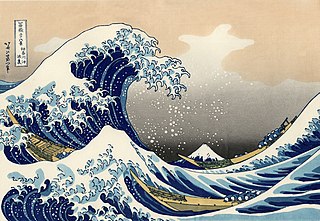
The Edo period or Tokugawa period (徳川時代) is the period between 1603 and 1868 in the history of Japan, when Japanese society was under the rule of the Tokugawa shogunate and the country's 300 regional daimyō. The period was characterized by economic growth, strict social order, isolationist foreign policies, a stable population, "no more wars", and popular enjoyment of arts and culture. The shogunate was officially established in Edo on March 24, 1603, by Tokugawa Ieyasu. The period came to an end with the Meiji Restoration on May 3, 1868, after the fall of Edo.

Tokugawa Ieyasu was the founder and first shōgun of the Tokugawa shogunate of Japan, which effectively ruled Japan from the Battle of Sekigahara in 1600 until the Meiji Restoration in 1868. Ieyasu seized power in 1600, received appointment as shōgun in 1603, and abdicated from office in 1605, but remained in power until his death in 1616. His given name is sometimes spelled Iyeyasu, according to the historical pronunciation of the kana character he. Ieyasu was posthumously enshrined at Nikkō Tōshō-gū with the name Tōshō Daigongen (東照大権現). He was one of the three unifiers of Japan, along with his former lord Nobunaga and Toyotomi Hideyoshi.
After Ieyasu's move into the Kantō region, Nobuyoshi was granted a 30,000 koku fief centered on Kogane Castle in Shimōsa Province. From Kogane he was moved to Sakura Castle, and a fief of 100,000 koku. In 1600, for his service as rusui-yaku for the western enceinte of Edo Castle, Ieyasu (victorious in the wake of the Sekigahara Campaign) gave his son the 250,000 koku Mito fief. However, as Nobuyoshi had been sickly from birth, he soon died at the age of 19. With Nobuyoshi's death, the Takeda of Kai came to a second end.
The koku(石) is a Japanese unit of volume, equal to ten cubic shaku. In this definition, 3.5937 koku equal one cubic metre, i.e. 1 koku is about 278.3 litres. The koku was originally defined as a quantity of rice, enough rice to feed one person for one year. A koku of rice weighs about 150 kilograms.

Shimōsa Province was a province of Japan in the area modern Chiba Prefecture, and Ibaraki Prefecture. It lies to the north of the Bōsō Peninsula (房総半島), whose name takes its first kanji from the name of Awa Province and its second from Kazusa and Shimōsa Provinces. Its abbreviated form name was Sōshū (総州) or Hokusō (北総).

Sakura Castle was a 17th-century castle, now in ruins, in Sakura, Chiba Prefecture. It was designated one of Japan's Top 100 Castles by the Japanese Castle Foundation.










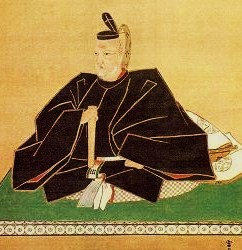

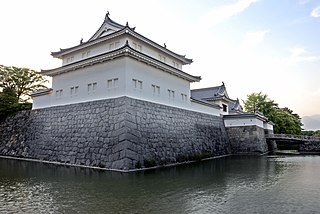
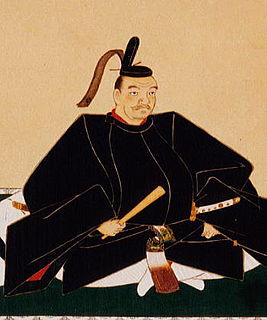
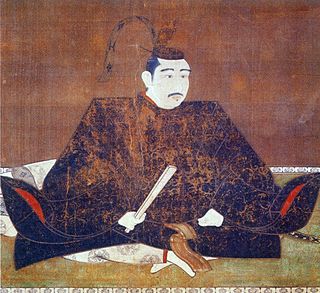
![Matsudaira Tadaaki [松平忠明] daimyo of the early Edo period](https://upload.wikimedia.org/wikipedia/commons/thumb/1/1d/%E6%9D%BE%E5%B9%B3%E5%BF%A0%E6%98%8E.jpg/207px-%E6%9D%BE%E5%B9%B3%E5%BF%A0%E6%98%8E.jpg)
